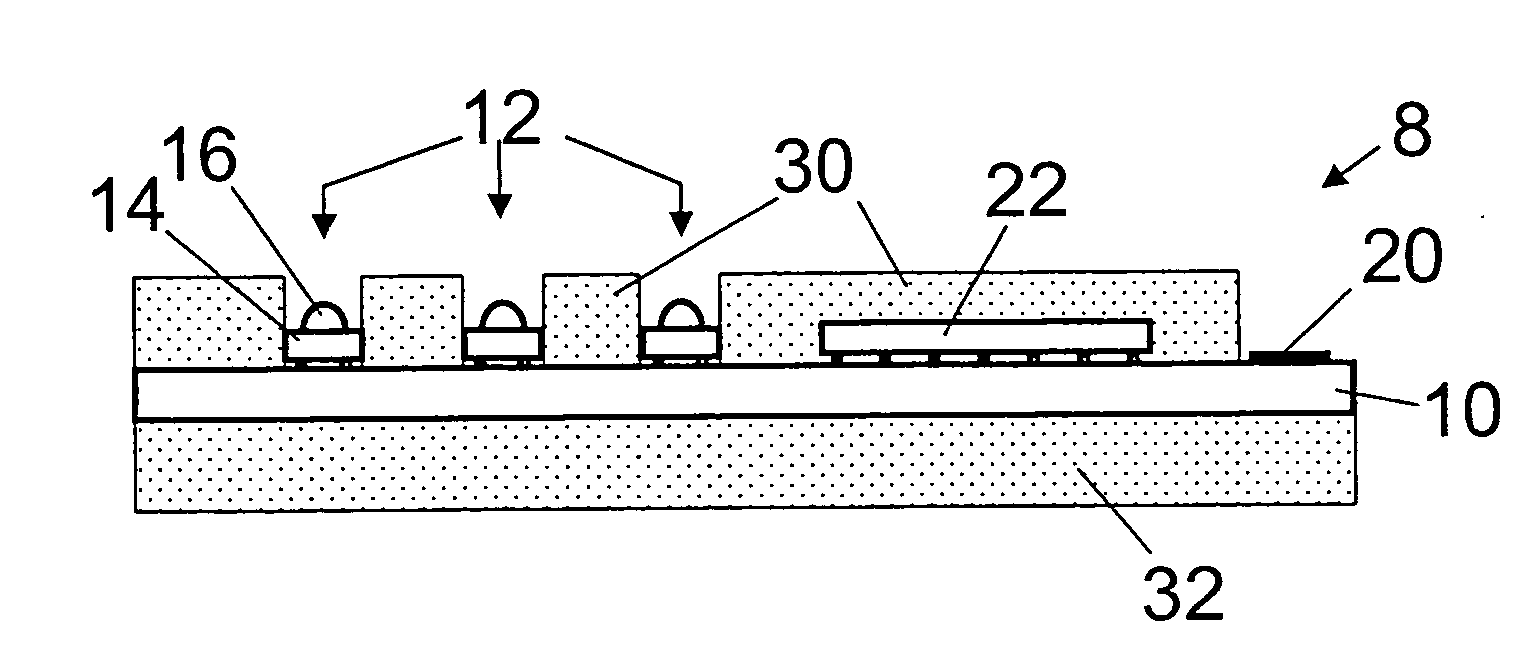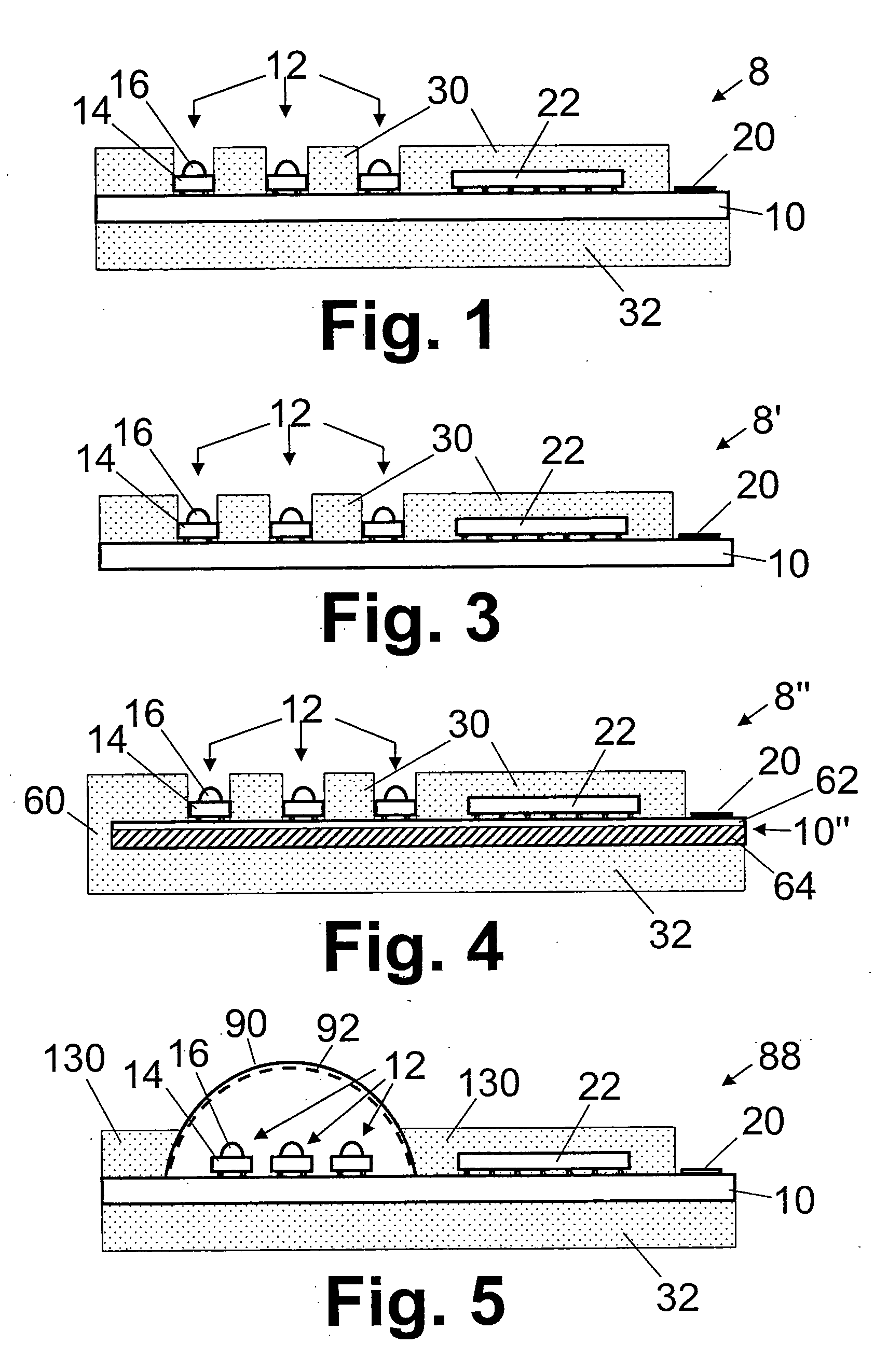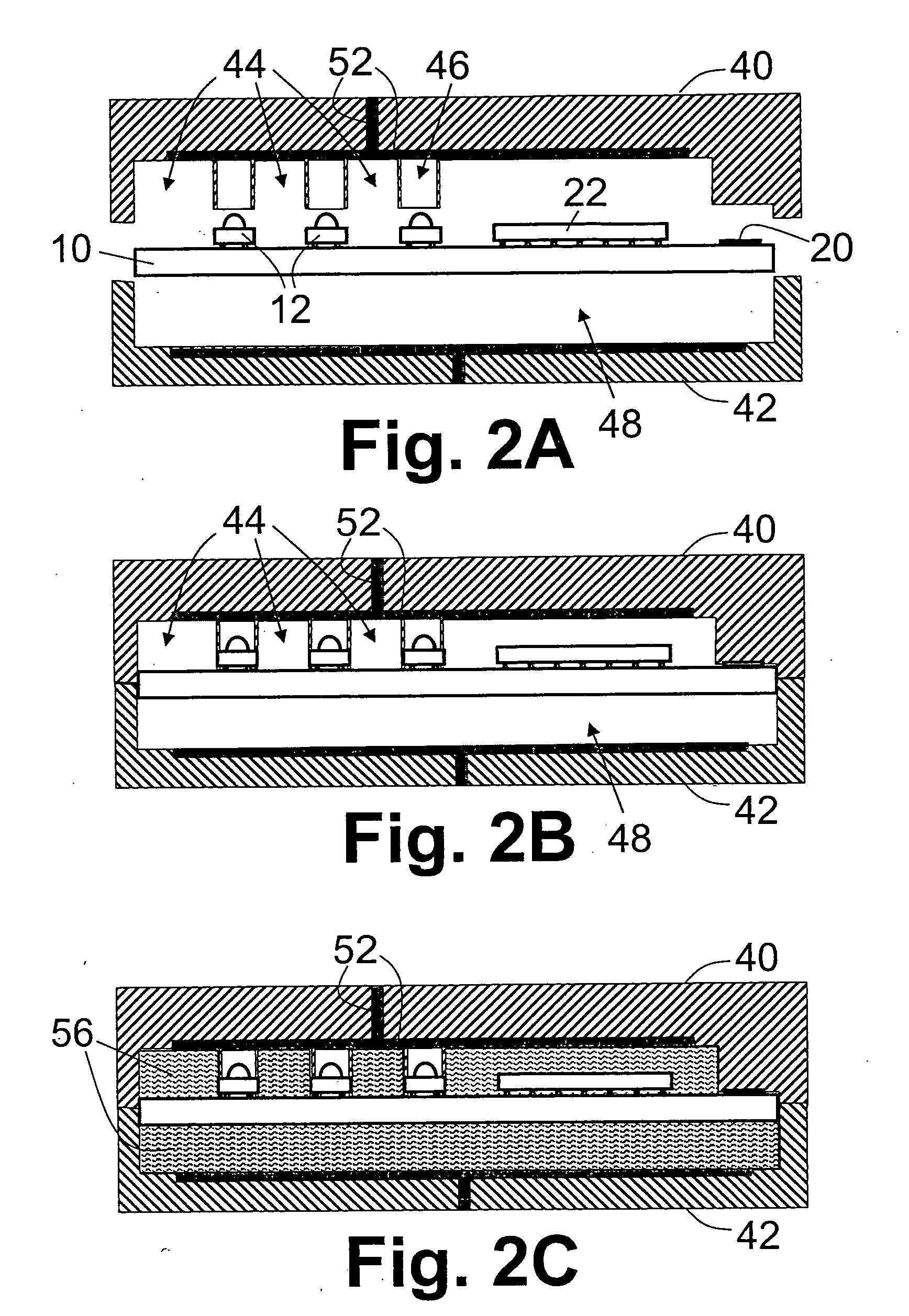LED lighting assemblies with thermal overmolding
a technology of led lighting and thermal overmolding, which is applied in the field of led lighting assemblies, can solve the problems of large heat sinks, relatively inefficient heat dissipation, and substantial cost and weight of metal heat sinks in lighting assemblies, and achieve the effect of thermal conductivity
- Summary
- Abstract
- Description
- Claims
- Application Information
AI Technical Summary
Benefits of technology
Problems solved by technology
Method used
Image
Examples
Embodiment Construction
[0024] With reference to FIG. 1, a lighting assembly 8 includes a printed circuit board 10 on which one or more light emitting diodes (LEDs) 12 are attached. In the illustrated embodiment, three LEDs are attached to the printed circuit board, however, the number of attached LEDs can be one, two, three, four, or more. Substantially any type of LED can be attached, such as for example: a white LED including an ultraviolet group III-nitride-based electroluminescent semiconductor diode coated by a white-light emitting phosphor blend; a white LED including a blue or violet group III-nitride-based electroluminescent semiconductor diode coated by a yellowish-light emitting phosphor blend; a blue LED including a blue group III-nitride-based electroluminescent semiconductor diode; a red LED including a red group III-arsenide, group III-phosphide, or group III-arsenide-phosphide electroluminescent semiconductor diode; a red LED including a red group III-arsenide, group III-phosphide, or group...
PUM
| Property | Measurement | Unit |
|---|---|---|
| Temperature | aaaaa | aaaaa |
| Thermal conductivity | aaaaa | aaaaa |
| Thermal conductivity | aaaaa | aaaaa |
Abstract
Description
Claims
Application Information
 Login to View More
Login to View More - R&D
- Intellectual Property
- Life Sciences
- Materials
- Tech Scout
- Unparalleled Data Quality
- Higher Quality Content
- 60% Fewer Hallucinations
Browse by: Latest US Patents, China's latest patents, Technical Efficacy Thesaurus, Application Domain, Technology Topic, Popular Technical Reports.
© 2025 PatSnap. All rights reserved.Legal|Privacy policy|Modern Slavery Act Transparency Statement|Sitemap|About US| Contact US: help@patsnap.com



